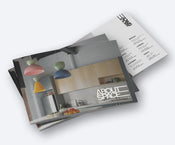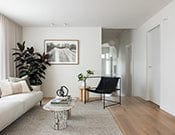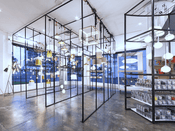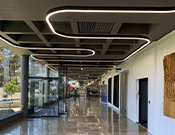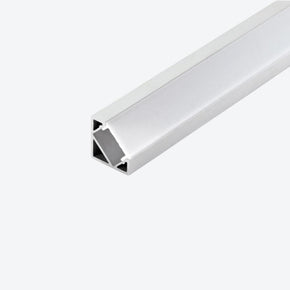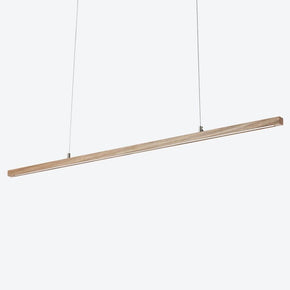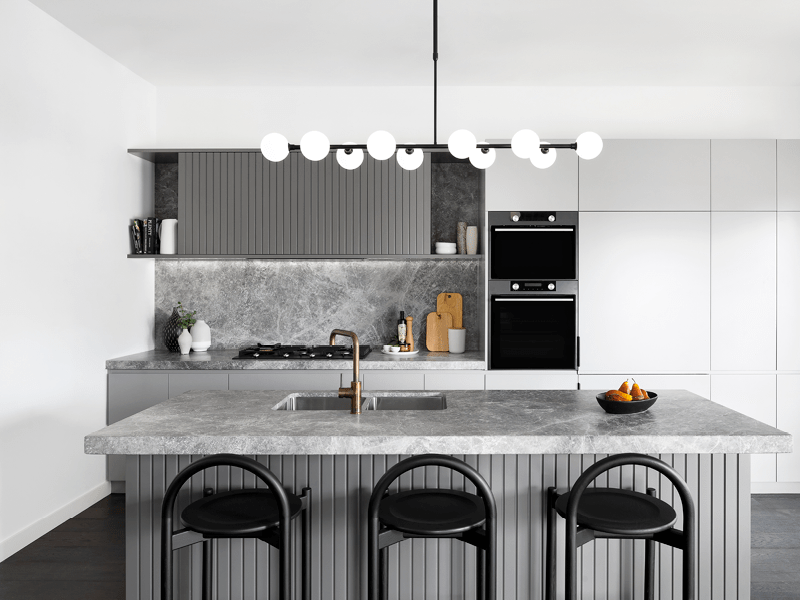- No products in the cart.
- ``
How to design green with energy-efficient lighting
04
May
Interior design has become a focus of many business owners as they seek to make a positive impact on their customers. Having an area lit appropriately and in a manner that fosters a pleasant experience for all is crucial, but what if doing so was cheaper, safer, and more durable in the long run? Here’s the good news: it is.
As a point of comparison, these energy-efficient LED (Light-emitting Diode) bulbs compared to traditional fluorescent bulbs, would be like comparing traditional fluorescent bulbs to candles.
Let’s take a deep dive into the wonders these little legends can do for you and your business.
Meeting Building Code Regulations
All Australian businesses must adhere to the Building Code of Australia and regulations on the safety and overall sustainability of the buildings they use. These Building Codes stipulate that when artificial lighting is installed, it must provide appropriate illuminance for the function of the area, while also maintaining a low energy consumption.
It’s recommended that you measure the illuminance of your lights and ensure they meet the standards. Below are the functions of areas with the corresponding illuminance requirements.

Fortunately, LEDs emit a higher efficacy and require a much lower wattage to illuminate areas that may require multiple fluorescent bulbs to stay while staying within these guidelines. Just what the doctor (or any other occupation where lighting is required) ordered.
LED Lights Give You More, For Less
Simply put, LED lights excel in their bang for their buck factor and their longevity. With a significant reduction in power consumption and usefulness in lighting big indoor and outdoor areas, LEDs give you more than traditional fluorescent lights do, for less money and hassle.
Hitting that sweet spot between effectively lighting and energy efficiency can be tough, but with fewer LED bulbs than the required number of fluorescent lights, you can save on initial costs and will enjoy a much longer life span. Seriously, these beauties can withstand it all. Their ideal use for outdoor areas is attributed to their ability to take a beating from rain, storms, rusting and shock, all while boasting better quality light. Essentially, LED lights are going to be in it for the long haul, where you’d be replacing fluorescents 2 or 3 times over in the same time.
Good For You, Better For The Environment
The only feeling in this world that beats the feeling of saving the environment, is the feeling of saving the environment while also saving money.
The progression in LED lighting solutions since their inception in the 60’s has allowed the technology to provide a better, cheaper product that doesn’t destroy the environment as one may reasonably expect. Go figure.
LED lights don’t contain the toxic elements of traditional fluorescent lights such as mercury. In fact, LED lights are 100% recyclable. Combine that with their impressive life span, saving on production emissions and materials used, that’s about as green as it gets.
Ready to make the switch? Find out how to convert your old bulbs to LED with this guide.
Rebates and Discounted Energy Products
Did you know that your business may be entitled to discounted energy-efficient lighting products? State government energy initiatives have been helping business owners save energy on their bills with various rebate programs. Found out if you’re eligible in your state:
- Victoria
- New South Wales
- Queensland
- South Australia
- Western Australia
- Tasmania
- Northern Territory
- Australian Capital Territory
More tips to reduce your energy consumption
Switching over to an LED solution is only one of many ways you can cut down on your lighting consumption. Below are some low-effort, low-cost improvements you can make:
Removing Unnecessary Globes
You may surprise yourself when assessing whether you really need all those globes to light up an area that receives a wealth of natural daylight, or simply doesn’t require the amount of light it’s getting. Depending on the task and purpose of the room, consider removing every second or third globe to maximise efficiency while maintaining the required light.
Motion Sensors
Installing motion detectors that will switch on/off the light when someone enters/leaves the room is a great way to save on lighting consumption that could be wasted on an empty room. These are best suited for restrooms, meeting rooms and storage rooms.
“Switch Off” Reminders
Simply put, reminding yourself and your staff to switch lights off as they leave rooms is about as low-cost, low-effort as it gets. Putting up signs, sticky notes or stickers with a cute little reminder makes a difference in that split second moment we exit a room.
Saving the world one light bulb at a time
Whether it’s to boost productivity in an office or to highlight merchandise in retail, LED lighting is a win/win for everyone. Making the switch to a more energy efficient lighting configuration is equal parts easy, smart and, of course, green!
Some have adopted the practice of replacing their fluorescent lights with LEDs when they start to dim – but why wait? Get in touch with the About Space team for more information and energy efficient lighting solutions.


